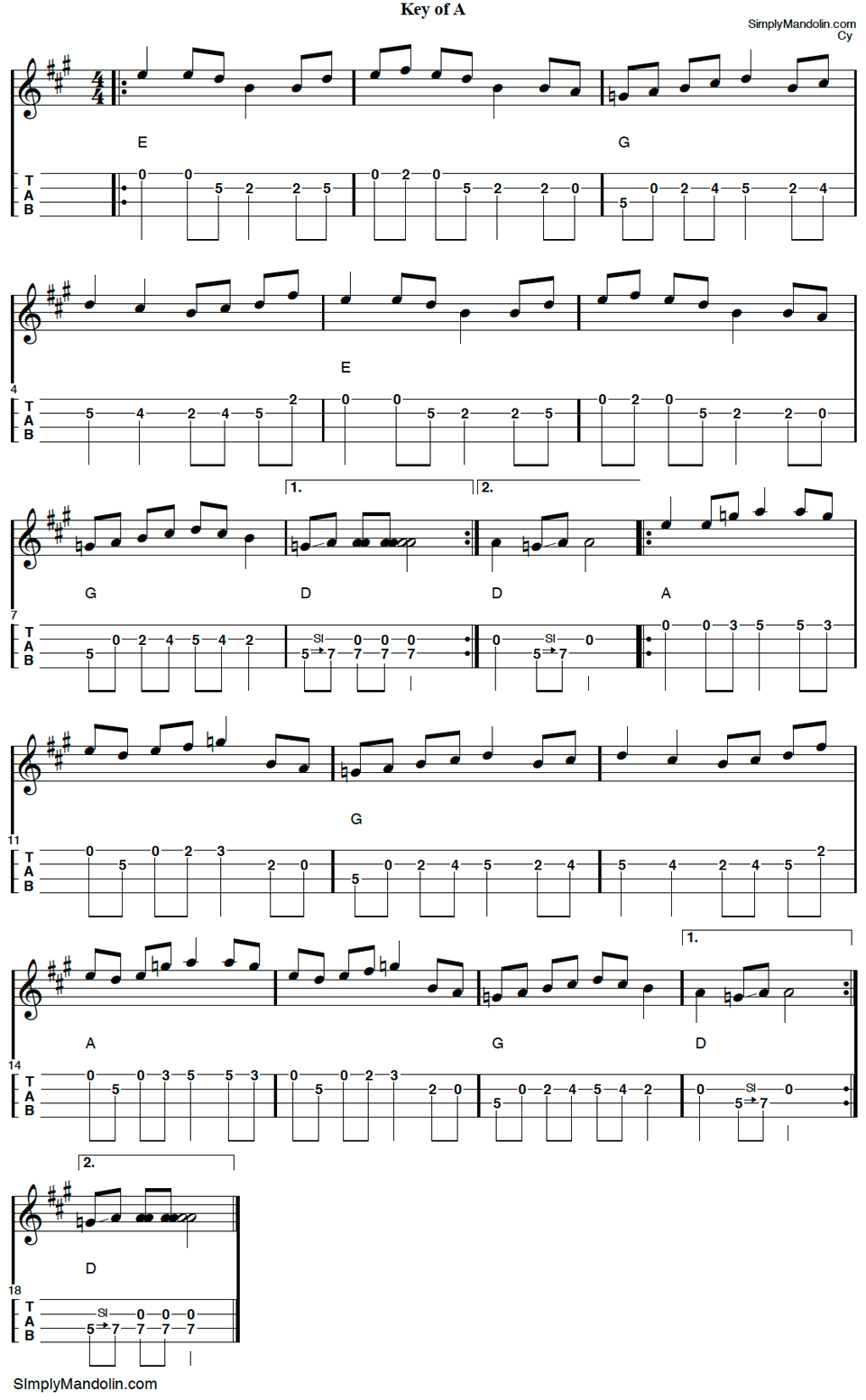
A Likeable Melody
Squirrel Hunters was a request from a site visitor. It’s an old fiddle tune that has a few different little twists, so it caught my attention as something that might be of interest to everyone.
It was easy enough to come up with something I could tab out, but when it comes to the key and the chords, it tends to take a few diversions from the standard.
I’m a big John Hartford fan, and I got some help from an old video I found on YouTube. In that video, Hartford explains this very tune as played on the fiddle.
The Tune
While Squirrel Hunters seems to be in the key of A, all the G’s are natural, not sharp. The tune starts off on an E chord (the fifth) and ends on a D chord (fourth). The second part starts with an A chord.
Listen to Squirrel Hunters for mandolin.
Squirrel Hunters

Downloads:
A Few Simple Variations
Adding just a single note to a few bars can make a solo sound a little different. Inserting a slide, double stop or pull-off etc., can also make a difference to the ear, thus adding “color”, or “embellishing” an arrangement. I’ve included a few very simple variations for you to try.
The A Part
In the very first bar, try adding a slide from the 5th fret to the 7th.

In addition, you might try adding just a single note to the fourth bar (an ‘A’ after the ‘D’ on the second string), thus turning that first quarter note into two eighth notes.

If you want, you can also add an open ‘A’ after the C#, filling that fourth bar with eighth notes.
The 5th bar is a repeated phrase (same as the 1st bar), as a result you can add the same slide to the fifth bar as you did in the first.
The B Part
The second part can also start off with a slide in the 10th bar. So, it would look like this:

Another single note can be added to the end of the eleventh bar so that the flow of notes continues into the next bar.

The 13th bar can be treated in the same manner as the 4th bar, adding a single note.
And finally, we can change the quarter note in the 14th bar into two eighth notes. As a result, the flow of notes continues well into the 15th bar.

So, that’s just a few simple variations. Give them a try and see what you think. Maybe see what you can come up with on your own.
Here’s the result:
And, the slower version:
Downloads:
Make Sure It’s Not Too Much
After making changes and variations, it’s always best to step back and take a look at what you’ve done. Make sure you haven’t made it too difficult or complicated. Make sure it’s not too “notey” (if that makes sense). In most cases you don’t want a tune that’s overly busy. Less is more.
Thanks for visiting. Please feel free to leave comments.
Cy…
Don’t Miss a Beat!
Join our mailing list for new tabs, practice ideas and study material.
Keep informed of new projects. Its free!
No spam, ever. That’s a promise!


Great tune. I agree with the less is more concept. Thanks for posting!